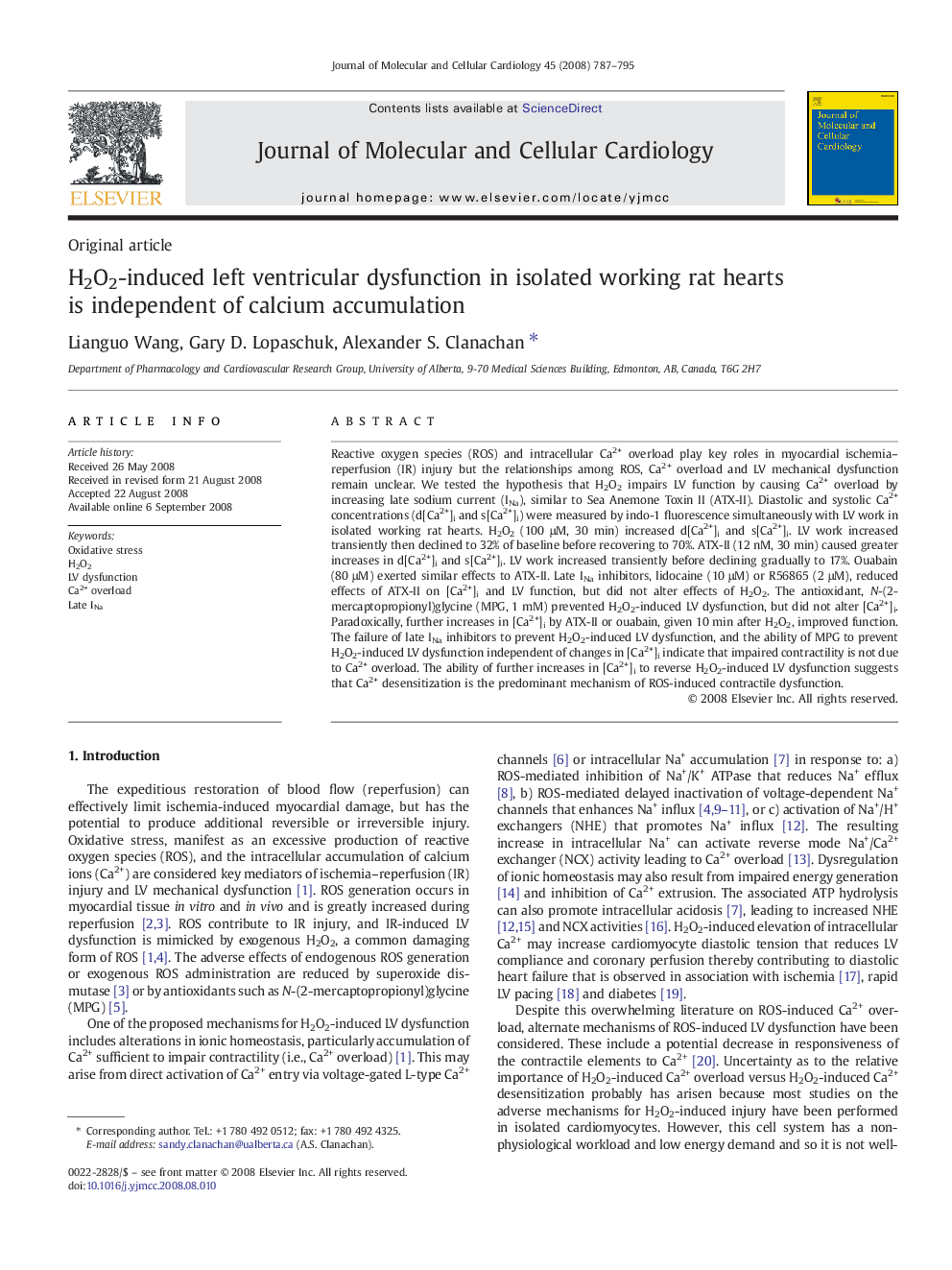| کد مقاله | کد نشریه | سال انتشار | مقاله انگلیسی | نسخه تمام متن |
|---|---|---|---|---|
| 2191207 | 1097852 | 2008 | 9 صفحه PDF | دانلود رایگان |

Reactive oxygen species (ROS) and intracellular Ca2+ overload play key roles in myocardial ischemia–reperfusion (IR) injury but the relationships among ROS, Ca2+ overload and LV mechanical dysfunction remain unclear. We tested the hypothesis that H2O2 impairs LV function by causing Ca2+ overload by increasing late sodium current (INa), similar to Sea Anemone Toxin II (ATX-II). Diastolic and systolic Ca2+ concentrations (d[Ca2+]i and s[Ca2+]i) were measured by indo-1 fluorescence simultaneously with LV work in isolated working rat hearts. H2O2 (100 μM, 30 min) increased d[Ca2+]i and s[Ca2+]i. LV work increased transiently then declined to 32% of baseline before recovering to 70%. ATX-II (12 nM, 30 min) caused greater increases in d[Ca2+]i and s[Ca2+]i. LV work increased transiently before declining gradually to 17%. Ouabain (80 μM) exerted similar effects to ATX-II. Late INa inhibitors, lidocaine (10 μM) or R56865 (2 μM), reduced effects of ATX-II on [Ca2+]i and LV function, but did not alter effects of H2O2. The antioxidant, N-(2-mercaptopropionyl)glycine (MPG, 1 mM) prevented H2O2-induced LV dysfunction, but did not alter [Ca2+]i. Paradoxically, further increases in [Ca2+]i by ATX-II or ouabain, given 10 min after H2O2, improved function. The failure of late INa inhibitors to prevent H2O2-induced LV dysfunction, and the ability of MPG to prevent H2O2-induced LV dysfunction independent of changes in [Ca2+]i indicate that impaired contractility is not due to Ca2+ overload. The ability of further increases in [Ca2+]i to reverse H2O2-induced LV dysfunction suggests that Ca2+ desensitization is the predominant mechanism of ROS-induced contractile dysfunction.
Journal: Journal of Molecular and Cellular Cardiology - Volume 45, Issue 6, December 2008, Pages 787–795